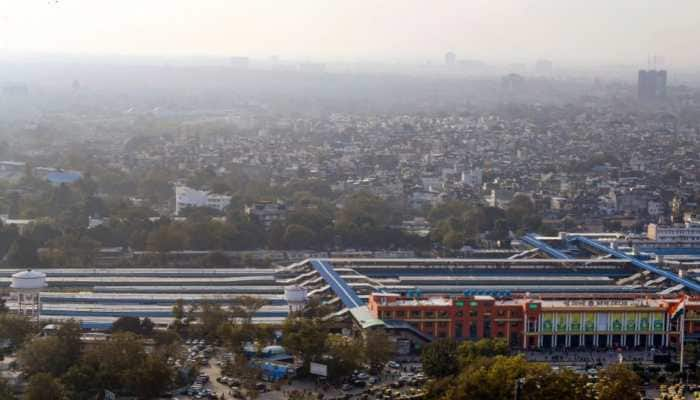Our own orbiter had located Vikram Lander earlier, says ISRO Chief K Sivan after NASA releases images
On its website, a statement was issued by the space agency on September 10, 2019, stating, "Vikram lander has been located by the orbiter of Chandrayaan-2, but no communication with it yet. All possible efforts are being made to establish communication with the lander."
Trending Photos
)
Indian Space Research Organisation (ISRO) Chief K Sivan asserted that the orbiter of Chandrayaan-2 had earlier located the Vikram Lander, adding that it was already announced by the space agency, reacting on NASA's announcement that it has found Chandrayaan-2's lander on the surface of the Moon. "Our own orbiter had located Vikram Lander, we had already declared that on our website, you can go back and see, said Sivan on Tuesday.
On its website, a statement was issued by the space agency on September 10, 2019, stating, "Vikram lander has been located by the orbiter of Chandrayaan-2, but no communication with it yet. All possible efforts are being made to establish communication with the lander."
In September 2019, the lander had lost communication with the ISRO moments before its scheduled soft-landing.
On Tuesday, NASA had released the images of the lander's impact site on the lunar surface. The space agency posted images clicked by its Lunar Reconnaissance Orbiter (LRO) Camera, showing the site`s changes on the Moon and the impact point before and after the spacecraft had made a hard-landing on the lunar surface. It also showed the impact spot of the lander and an associated debris field created by the crash with blue and green dots respectively.
"Green dots indicate spacecraft debris (confirmed or likely). Blue dots locate disturbed soil, likely where small bits of the spacecraft churned up the regolith. "S" indicates debris identified by Shanmuga Subramanian," read a statement. "Shanmuga Subramanian contacted the LRO project with positive identification of debris. After receiving this tip, the LROC team confirmed the identification by comparing before and after images," it added."
Vikram Lander was just 2.1 kilometres above the lunar surface when it lost contact with ISRO, throwing a pall of gloom over the Indian space agency. After the hard-landing of Vikram Lander on the lunar surface, the ISRO had expressed hopes that they have at least 14 days to establish contact with it.
The Chandrayaan 2 Vikram lander was targeted for a highland smooth plain about 600 kilometres from the south pole but the ISRO lost contact with their lander shortly before the scheduled touchdown (September 7). Shanmuga Subramanian contacted the LRO project with positive identification of debris. After receiving this tip, the LROC team confirmed the identification by comparing before and after images, said NASA.
Stay informed on all the latest news, real-time breaking news updates, and follow all the important headlines in india news and world News on Zee News.
Live Tv







)
)
)
)
)
)
)
)
)
)
